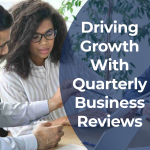
AI vs. Guesswork: Uncover the Truth Behind Forecast Misses
Predictable revenue isn’t merely an aspiration; it’s the lifeblood of valuation, a cornerstone of investor confidence, and a critical driver of sustainable scaling. Yet, for many organizations, true predictability remains maddeningly out of reach.
Why does the ability to anticipate revenue outcomes still feel so elusive, even in our data-saturated era?
The Million-Dollar Miss – How a SaaS Unicorn, Drowning in Data, Blew Its Forecast
Picture a high-flying B2B SaaS company—an industry darling flush with fresh capital and sky-high expectations. By all appearances, they had solved the data puzzle: their CRM captured every lead, every call, and every incremental step along the sales pipeline. Dashboards glowed green, reflecting an apparently healthy funnel. Executives rested easy, confidently projecting a strong close to the quarter.
But then reality struck. As the quarter ended, revenue was off by a shocking margin—not just a minor slip, but a glaring shortfall that rattled the entire organization. Sales leadership was baffled; the team was talented, the market was receptive, and the CRM had been meticulously maintained.
How could they, with all their carefully managed data, fail to see such a dramatic miss coming?
Why Do Our Forecasts Feel Like Fortune-Telling?
This high-profile miss wasn’t an outlier; it highlighted a widespread frustration across B2B sectors, including SaaS, media and tech. Despite massive investments in sales technology, executives often confess to a lingering mistrust of pipeline forecasts. Traditional revenue management hinges on the hope that more CRM data yields more certainty. Yet time and again, leaders find themselves in the dark, left to wonder: Why does forecasting continue to feel more like guessing than science?
Part of the answer lies in the fundamental assumption that diligently entered CRM data—logged by sales reps with all their human biases and blind spots—can be wholly relied upon to chart the future. But what if this conventional wisdom is flawed at its core? What if the most potent signals about an account’s potential are not the ones reps manually input but the ones customers themselves reveal—often in ways that never make it into a spreadsheet?
Unpacking the Flawed Foundation of Traditional Forecasting
To solve this paradox, we need to reexamine how most organizations generate revenue forecasts. Historically, companies have clung to the mantra:
“If it’s not in Salesforce, it didn’t happen.”
And while CRMs remain a useful repository for sales activity, they’re fatally limited by human subjectivity, erratic data entry, and the natural “wishful thinking” that creeps into any sales org’s numbers. In short, data only tells the truth if it is captured completely and without bias.
Enter a new mindset:
“If AI didn’t capture it, it didn’t happen.”
In today’s environment, the real source of truth is not the CRM, but the customer. Every click, download, trial activation, product login, or support request is a potential “signal,” a clue to future intent that can either confirm or contradict what a sales rep logs in the CRM. Yet these signals are often scattered across marketing platforms, support systems, product analytics, and conversation intelligence tools—leading many organizations to miss critical leading indicators.
AI changes the game by “listening, interpreting, and acting” upon these multidimensional signals in near real-time. Rather than relying on static data entry, AI automatically ingests the behavioral footprints customers leave—website visits, feature usage, call transcripts, email responses—and transforms them into pragmatic insights. In other words, AI isn’t only diagnosing what has happened; it’s predicting what will happen based on historic patterns, sentiment analysis, and ongoing user behavior. This proactive capability closes the gap between the illusions of a single, rep-entered pipeline and the reality of customers’ actual buying journeys.
Crucially, implementation success depends on methodical planning. For an AI platform to capture the right signals, leaders need to conduct thoughtful vendor evaluations, align on the most relevant data sources, and run pilot programs that verify accuracy. Continuous monitoring is essential to make sure teams act on the insights AI surfaces. After all, the best intelligence in the world is wasted if no one uses it.
Beyond the left side of the sales process—where new logos come in—the shift toward AI-driven insights is even more important on the right side, where onboarding, adoption, retention, and renewal occur. As many B2B executives know (though often neglect), expansion revenue can be one of the most potent levers for sustainable growth. By interpreting—and, at times, anticipating—unstructured data from support tickets or feedback channels, AI reveals where organizational “impact” is already seeded, offering a direct path to upsells or renewals. That’s the future of data-driven pipeline management: not just broad guesses but high-fidelity insight into where today’s growth can inform—and even guarantee—tomorrow’s revenue.
In sectors like SaaS, Tech, Media and entertainment, where audience behavior can be fluid and localized, the ability to capture and analyze scattered customer signals is especially critical. Local user-base insights, specific content preferences, and even engagement timing can fuel unique expansions or hamper deals if left unchecked. In a world where global reach and localized strategies go hand in hand, AI’s capacity to unify and interpret varied signals makes the difference between operational blind spots and well-informed decisions.
The Signal, Not the CRM, Unlocks Predictable Revenue
Consequently, the key revelation is as straightforward as it is disruptive: predictable revenue doesn’t spring from meticulously curated CRM entries; it emerges when you systematically harness authentic customer signals at scale. Traditional pipelines rely on internal assumptions. AI-fueled pipelines tap into external truths, often uncovering deal risks and expansion opportunities far earlier. Instead of simply documenting what a sales rep “hopes” to happen, AI listens to what the customer is really doing—and acts on that reality.
This is where advanced Growth Guidance Systems and prescriptive AI come into play. Rather than looking in the rearview mirror, these platforms model growth trajectories with far tighter confidence intervals (e.g., ±5% accuracy). They automatically suggest interventions—escalating deals that show early warning signs, recommending outreach times most likely to yield a response, or pinpointing expansion-ready accounts well before end-of-term discussions. Done right, you’re not just reacting to pipeline shortfalls post-mortem; you’re actively reshaping your revenue future in near real-time.
Why It Matters for Executives—From SaaS to Media & Entertainment
For C-suite executives and their private equity backers, failing to embrace this AI-powered, signal-based approach to pipeline management means forfeiting a level of predictability that’s increasingly becoming table stakes. It perpetuates a cycle of murky forecasts, misguided budget allocations, and missed growth windows. It also means ignoring the enormous upside of expansion revenue that often lies dormant in existing account bases.
By contrast, those who pivot to this proactive, AI-first approach unlock tangible competitive advantages:
- Sharper Forecast Accuracy: With consistent signal capturing, plan achievability can be gauged far more precisely, giving both executive teams and investors greater confidence in revenue targets.
- Higher Conversion Rates & Faster Sales Cycles: Early detection of strong buying intent or risk triggers more immediate, data-informed interventions.
- Better Net Revenue Retention (NRR): By focusing on post-sale behavior and sentiment, organizations seize growth potential from existing customers rather than relying solely on top-of-funnel leads.
- Scalable Efficiency: AI-driven insights let you redeploy resources for maximum impact, without having to continually add headcount to sustain growth.
This transition from reactive pipeline management to proactive, AI-powered revenue optimization has profound strategic and operational implications. It means rethinking the entire go-to-market architecture—strategy, processes, and people—to integrate AI seamlessly. That’s where targeted expertise can help: rolling out new technology piecemeal, without also tackling organizational readiness or sales leadership alignment, usually leads to half-baked results.
Are You Still Driving Blind—or Reading the Signals?
If you’re a CEO or PE partner seeking to demystify your monthly or quarterly revenue outcomes, the question is no longer whether you collect data—it’s how effectively you interpret real customer signals. Are you allowing outdated processes to mask real buying patterns behind a veil of hope-driven forecasts? Or are you leveraging AI to glean early warnings, proactively shape pipeline health, and pinpoint where expansions are likely to accelerate growth?
By adopting an “If AI didn’t capture it, it didn’t happen” mentality—and ensuring the right pilot frameworks, KPIs, and monitoring structures are in place—organizations can traverse from guesswork to guidance. They can move beyond limiting, CRM-focused approximations and into a realm of revenue strategy that captures genuine customer footprints. This cultural and technological shift is not trivial, but neither is the payoff—particularly in dynamic environments like media and entertainment, where local nuances can make the difference between global success and costly missteps.
Of course, unlocking these gains doesn’t happen overnight. Many enterprises need outside perspective to diagnose systemic bottlenecks, redesign processes, and embed AI insights in day-to-day operations. Specialists in revenue growth management can address the intangible “GTM debt” that accumulates when manual methods outlive their usefulness. Likewise, an experienced fractional sales leader can be the linchpin that ensures adoption takes root, championing AI insights at the frontline so they become integral to every deal cycle.
For organizations operating in the SaaS, Tech, media and entertainment space—where audience behaviors, licensing intricacies, and local content preferences add extra layers of complexity—signal-driven AI approaches can reveal hidden pockets of opportunity or risk that traditional pipelines simply never surface. The same principle applies to expansions into new geographic territories, where local market nuances demand a nuanced, signal-based approach. The scope may be broader, but the fundamental logic remains: real-world, real-time signals trump guesswork every time.
Ultimately, the path to predictable growth lies in how seriously you take the signals your customers are broadcasting—and how effectively you turn that data into timely, decisive action. The invitation is to explore whether your organization is truly capturing these signals, or if you’re still staring at the CRM’s green lights, hoping they’ll guide you to an outcome that remains stubbornly unpredictable.
Little wonder so many leading companies, from SaaS providers to M&E dynasties, are rethinking their approach. They see that the once-dominant reliance on CRM data alone is teetering. The real frontier is AI-enabled pipeline management that listens to customers, interprets raw data for deeper meaning, and acts swiftly, course-correcting well before a miss derails the quarter—or the year.
So, take this moment to ask: Are you ready to align your organization around the signals that drive real revenue outcomes? Or will you continue piecing together a forecast from incomplete data, hoping the sum is somehow greater than its parts? If you opt for the first path, know that you need the right guidance, the right methodology, and the right leadership mindset to make it stick. But the prize—a more predictable, more confident, and ultimately more profitable future—may be well worth the effort.
As you reflect on the lingering gaps in your revenue predictability, consider how AI signal management, combined with experienced revenue growth consulting and fractional leadership, can help architect a future where forecast misses become the exception rather than the rule. If you’re prepared to transition from reactive data inputs to proactive customer signals—and from guesswork to reliable guidance—nGülam’s proven approaches in GTM alignment, AI-driven strategy, and predictive pipeline optimization may offer the strategic boost you’ve been seeking.
Let the signals show you the way forward.






